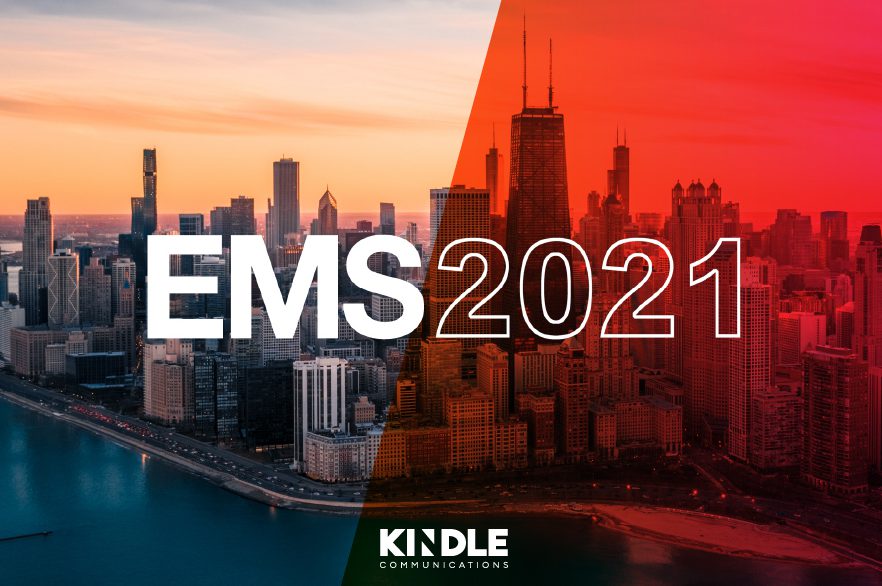The Battle for Brands to Become More Human: Four Takeaways From Seattle Interactive Conference

Some Kindlers recently got the chance to attend this year’s Seattle Interactive Conference (SIC), which is quickly becoming the Northwest’s answer to SXSW. The conference gathers digital marketers, creatives, strategists, designers and developers to discuss the challenges and opportunities facing our ever-evolving, technology-fueled industry.
This year’s session content — delivered by some of the world’s largest brands like Expedia, Amazon, Starbucks, REI and Microsoft — was connected by some consistent insights and trending topics.
1. Personalization vs. Data Privacy
People are craving personalized experiences more than ever before, while also becoming increasingly uncomfortable with the amount of data companies collect and share about them.
Some brands have developed interfaces filled with hidden program trickery and deceptive claims of how and why they collect data — that many consumers don’t even know exist. But when they do find out (case in point: Facebook and Cambridge Analytics) their trust and loyalty are probably lost for good.
So what’s the answer? Jordan Barr from Expedia and Anne Marie Tallariti from Starbucks both agreed that it’s about understanding why you’re collecting data in the first place and how you intend to use it. Be open and honest about your collection of data and what the audience is getting in return.
It then becomes about how you use the data. Use data to monitor human behavior and find ways to connect relevant opportunities based on customer preferences or user actions. It can’t be just for reporting ROI, rather it needs to equally add value back to the customer and enhance their overall experience. An example of this occurred at the McDonald’s Worldwide Convention, where Kindle developed a very purposeful, live data dashboard meant to display real-time metrics from the show floor. Through this dashboard, we were able to react in real-time and shift experiences onsite based directly on attendee behavior and preferences.

2. Technology vs Creativity
Digital marketers are becoming more equipped to use data to inform strategy and measure results than ever before. However, relying too much on data to drive action and predict outcomes can stifle creativity. Some brands are still designing and creating for the ‘what’ without first stepping back to think about the ‘why,’ a critical misstep. As a result, they ultimately operate in a rush, purely to feed the data machine, with content that lacks any real substance or purpose and provides very little value to the end user.
Panelists Chandreyi Saha Davis from Amazon, Kate Jaffe from Rover, and Geoffrey Colon from Microsoft agreed that there’s no creative tension anymore. Nobody is willing to disagree or take enough risks. It’s much more exciting to explore the contrarian point of view.
The lesson? Don’t try to be overly data-driven. When you make too many decisions based on data, the results become less human, and ultimately, less interesting.
Data itself doesn’t change the world, that takes humans with bold ideas and interpretations to use the data to identify needs and find ways to do something new and different. So be bold, be contrary, take risks and lead with meaningful creativity.
3. Artificial Intelligence vs. Human Connection
Whether we like it or not, we are becoming increasingly surrounded by AI and robotic assistants. So how can you help consumers better connect with your brand on an emotional, meaningful level? In other words, how can the robots that we all hate dealing with become more human?
Many brands are using machine learning technologies that monitor and measure things like vocal emotion and aggression patterns, written tone and facial expression to get a sense of the emotion and mood of their consumers.
A successful brand personality consists of two parts: voice and tone. Voice is synonymous with your brand. Tone is how you adapt that voice to people and events. So, whether your brand archetype has a more serious, leadership personality, or a more comedic, fun-loving one–this is where successful brands pivot their tone slightly to fit the need.
4. Selling vs Storytelling
A common message across many presentations was that “brands that matter need to be human at their core.” And storytelling is one of the most impactful ways for brands to wear their humanity and purpose with authenticity.
One of the best examples of this in action was from Microsoft’s Storylabs – a proprietary content platform designed to share “mindfully told brand stories that inspire and add value,” not to sell. What “The Steves” (Steve Clayton & Steve Wiens) from Microsoft explained was that the best stories are about people. Fundamentally, they are stories of humans doing human things.
The fact that the creation of some of these brand stories have unexpectedly resulted in the development and launch of award-winning products for Microsoft (such as the Xbox Adaptive Controller) is further proof that a combination of empathy and creativity has the ability to change the world.
Another key point they shared was that well-told stories are particular about platform too. Too many brands and marketers jump onto the latest technology bandwagon, without giving thought to the best medium for the story they are trying to share.
We’ve had great success with launching brand storytelling platforms and creating compelling podcast content for our clients. It was great to see the industry data supports the increasing value of storytelling — and to hear how it was being inspired by some of the biggest brands, who are human at the core and are doing it the best.














